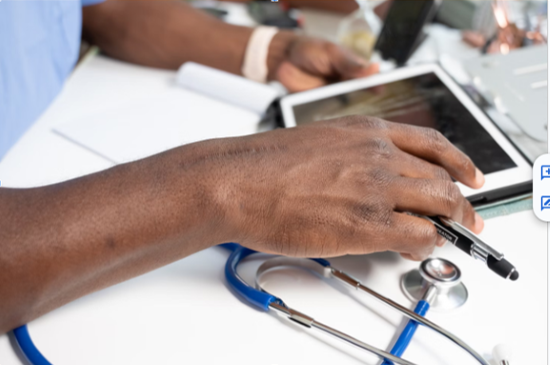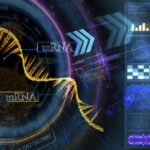Please welcome back Katie Brenneman, a regular 21st Century Tech Blog contributor. You can follow Katie on X. Today’s topic focuses on innovations coming to healthcare data management (HDM). The benefit to patients of implementing HDM in medical and hospital practices is just beginning. The universal electronic patient record combined with HDM will soon become the gold standard for clinical and hospital practice based on what Katie describes in this posting. We welcome your comments.
Data science brings precision and speed to clinical decision-making, while optimized process flows reduce medical errors and wait times. Healthcare providers use advanced analytics to spot patterns in patient data, predict treatment responses, and adjust care plans in real-time.
Combining smart data systems and refined clinical workflows creates a medical environment where decisions stem from professional expertise and data-backed insights. These technological advances support medical teams as they diagnose conditions, plan treatments, and monitor patient progress while maintaining the human touch that defines quality health care.
Data Science Trends in Healthcare
Medical data analytics advances patient care through artificial intelligence (AI), predictive modelling, and automated pattern recognition. These technologies help medical professionals identify subtle health indicators and potential complications before they become serious. The latest data science trends point to increased adoption of AI-powered diagnostic tools and predictive analytics platforms across provincial health authorities.
AI in Medical Diagnostics
Machine learning algorithms analyze medical images, lab results, and patient histories to suggest potential diagnoses with increasing accuracy. These AI systems act as collaborative tools, supporting clinicians by flagging subtle patterns and anomalies that might go unnoticed during initial assessments. The speed and precision of AI analysis reduce diagnostic time while maintaining high standards of accuracy.
Clinical Support Systems Evolution
Modern clinical support systems integrate real-time data analysis with patient monitoring capabilities. Medical researchers suggest digital twins of patients soon can create virtual models of individual health profiles, allowing for comprehensive simulations before treatments are administered. These innovations add another layer of verification to clinical decisions while maintaining the central role of medical expertise.
The Importance of Process Flows in Clinical Decision-Making
Process flows map out clinical decisions and actions in a structured sequence, turning complex medical procedures into clear steps for healthcare teams. These visual guides show how information moves through a healthcare system, who makes specific decisions, and what actions follow each choice. Medical teams use process flows to catch potential problems before they affect patient care. Building effective process flows makes medical procedures more consistent while incrementally reducing critical errors.
Standardizing Medical Procedures
Medical process flows establish standard practices that reduce variation in the delivery of patient care. When staff members follow consistent steps for common procedures, they make fewer errors and spend less time having to make routine decisions. This standardization creates a baseline for measuring and improving clinical performance. The documented procedures also help new staff members quickly learn and integrate into established medical teams.
Optimizing Clinical Workflows
Well-designed workflows remove bottlenecks that slow down patient care. Clear process maps help medical teams spot and fix inefficient steps, leading to faster patient care without cutting corners. Regular workflow refinements based on staff feedback and outcomes data create medical environments where tasks flow smoothly from admission through discharge. These optimized systems adapt to changing patient loads while maintaining high care standards.
Integrating Data Science and Process Flows
Data analytics adds intelligence to clinical process flows by identifying patterns in patient care pathways and suggesting improvements. Medical facilities now use smart systems that track each step of a patient’s care, measure outcomes, and refine procedures based on results. Remote healthcare technology can connect rural clinics to urban medical centres to enable the sharing of expertise and the standardization of care.
Real-Time Process Optimization
Novel experiences serve to create stronger mental pathways than do familiar routines. For example, learning a musical instrument, studying a language, or mastering a craft, strengthens cognitive function. Social activities such as group discussions, game nights, or collaborative projects provide both mental stimulation and also meaningful connections, using shared learning and discovery to improve mental wellness.
Predictive Resource Management
Meditation and mindfulness strengthen mental clarity and emotional balance. Simple practices such as observing breath patterns, scanning physical sensations, or practicing single-task focus, help build concentration. Moments of directed awareness reduce mental clutter and improve attention span and mental resilience.
HDM in Practice Can Be a Game-Changer
Clinicians are reaping the benefits of advancements in HDM software, gaining deeper insights into their patients from collected data while at the same time improving and streamlining daily operations.
This next generation of HDM software is combining process automation with medical expertise, leading to faster and more accurate clinical decisions. As medical teams gain experience using HDMs, they are finding new ways to blend traditional medical knowledge with data-driven insights, putting better patient care at the center of a technological revolution in the 21st century.









